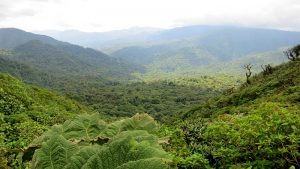Yellowstone park shows us how an ecosystem can change unexpectedly and come back to life, thanks to the reintegration of specific animal species… in this case, wolves. Despite being considered “terrible predators” by the collective imagination, their return has triggered a series of unique and unexpected positive changes to the area.
In 1977 the US fish and wildlife service analysed the territory with the aid of a group of biologists and decided to reintegrate 14 wolves into Yellowstone Park. These animals were missing since 1926, and their return has caused the park to flourish and gain new life.
After their release, these 14 wolves started to hunt down deer (of which they are natural predators). Consequently, the deer began to abandon some areas of the park where they had settled and in, as thei were easy prey to the wolves.
As herbivores, the deer had greatly depleted the area by feeding on a variety of flora that grew in those areas. Their displacement allowed trees such as poplars and weeping willows to to grow and flourish profusely.
In addition to these two species of trees, a more varied undergrowth started to reappear and some species of berries returned, which in turn attracted many types of native insects… which in turn attracted their natural predators, birds…. which in turn attracted their natural predators, the great birds of prey!
Beavers had also been missing for a long time, but following a substantial development and change of flora and fauna within the park, the large rodent also reappeared and began to build dams which then facilitated the movement of different species of reptiles and rodents such as otters and muskrats.
On top of all of the above changes, the reintroduction of these wolves has also reduced the coyote population and, in doing so, increased the presence of rabbits and mice, which then attracted red foxes, badgers, hawks, weasels and golden eagles.
This really shows the importance of maintaining the delicate balance of nature.
Having reported a greater balance between predators and prey, many other species have also been able to develop. While due to the increase in vegetation, soil erosion has decreased and the banks of the rivers have stabilized. Ponds have formed and rivers have stabilized.
The wolf is a natural selector. It control the population of its prey and eliminates carcasses of animals that died of natural causes.
In doing so, these large predators, often feared and exterminated, have given new life to the entire ecosystem of the Yellowstone park by creating chain reactions of regeneration of the local flora and fauna, that have even led to the modification of the physical geography of the park!
—
Source: The Guardian





